Similar to the Tacoma, the updated 2025 Toyota 4Runner Arrives with Overland-Themed Trailhunter Trim! comes with a new Trailhunter model that is loaded with off-road services.
- The standard 2.4-liter four-cylinder, i-FORCE turbocharged engine generates 278 horsepower and 317 lb.-ft of torque.
- The available i-FORCE MAX hybrid powertrain can provide up to 465 lb.-ft of torque and 326 horsepower.
- The brand-new Trailhunter overlanding vehicle from Toyota is equipped with the newest integrated off-road gear from ARB®, Old Man Emu®, and RIGID Industries®.
- Power liftgate optional; standard power rear window
- Now available is the first-ever Platinum premium grade.
- Accessible The newest Toyota Audio Multimedia is shown on a 14-inch touchscreen.
- All models come with Toyota Safety Sense 3.0 standard.
- available in the fall of 2024
The New Toyota 4Runner 2025 shares several design cues with the Tacoma pickup truck, including a squared-off front end and a combination of four-cylinder gas and hybrid drivetrains. When the Toyota mid-size truck made its appearance for the 2024 model year, it also debuted under the new Trailhunter name. Now, the new 4Runner follows Tacoma’s off-road tire trail with its own overland exploration-focused Trailhunter model.
For people who wish to explore the wilderness in their vehicles, Toyota refers to the 4Runner Trailhunter as “a manufacturer-developed overland rig straight from the factory,” thus doing away with the necessity for third-party upfitters. The i-Force Max hybrid engine, which comprises a 2.4-liter turbo-4 coupled with an electric motor and a small 1.87-kWh battery, is the only one available for the Trailhunter.
326 horsepower and 465 pound-feet of torque are produced overall. A high-mounted mask intake aids in providing clean air to the i-Force Max engine for swimmers.
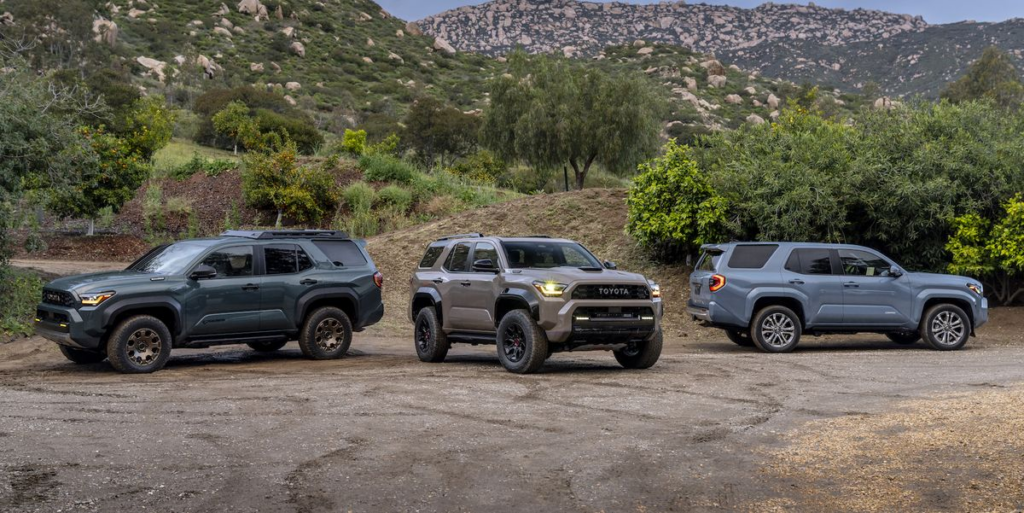
Like the Tacoma model, the 4Runner was developed for Overlanding and replaces the Fox QS3 dampers found on the TRD Pro with Old Man Emu 2.5-inch ones that have ARB’s external reservoirs at the rear. With 33-inch Toyo Open Country all-terrain tires, the Trailhunter variant also sits 2.0 inches higher up front and 1.5 inches higher up back than other 4Runner models. The Trailhunter shares the same front twin control-arm suspension and rear multilink arrangement as other 2025 4Runner, except for improved dampers. In addition, the Trailhunter has a front anti-roll bar that disconnects and an electronic locking rear differential as standard equipment.
The Trailhunter includes steel skid plates and rock rails mounted straight to the frame to protect its important parts. Bronze wheels with color-matched Toyota grille badging and a bespoke ARB roof rack made especially for the 4Runner Trailhunter are two further distinctive visual components. A 20-inch LED light strip is also located in the grille to brighten up dark trails, and the bumper’s rigid LED fog lamps have a color-changing feature.
Additionally, Toyota outfitted the Trailhunter with a 2400-watt AC inverter that supplies power to outlets located in both the rear cargo area and the cabin. Owners can simply add even more personalization to their SUVs with the three pre-wired auxiliary switches, and the i-Force Max powertrain provides a 6000-pound tow capability. Inside, the Trailhunter differs from its more usual siblings thanks to trim-specific components.
In the fall of this year, the is expected to start showing up at dealerships. Pricing has not yet been announced, but we anticipate the Trailhunter to be in the upper end of the spectrum, costing approximately $60,000.
2025 4runner price: Right now the price of the 2025 Toyota 4Runner is expected to start around $45,000 and go up to $60,000 depending on the trim. With rumors of a complete redesign including a new platform, powertrains, and updated design, the next-gen 2025 Toyota 4Runner is shaping up to be a great improvement over previous models.
6th Gen 4runner
The 6th Gen 4runner off-road SUV had a successful 15-year run, but the sixth-gen’s new powertrains and upgraded frame make it easy to move on.
Identical to a Tacoma SUV More Than Before
Although the 4Runner’s new front-end design isn’t a Tacoma copy, it does look a lot like one. With a bigger track and three more inches of total body width, its posture is also similar. Similar to the Tacoma, the majority of the additional width is derived from pronounced fender flares that extend further to conceal the wider track of the suspension. The Toyo Open Country AT III tires installed on the TRD Pro and Trailhunter are sized at 265/70R-18, which corresponds to 33 inches tall, however, many precise measurements have not yet been disclosed.
Like the Tacoma, the 4Runner’s wheelbase has been extended up front to provide greater body-mount clearance, making larger tires of this kind possible. Due to the area’s relative lack of daylight, it was difficult to fit larger tires into earlier models of both vehicles. This translates to a 2.4-inch increase in wheelbase for the 4Runner (from 109.8 to 112.2 inches), putting it in line with the new Land Cruiser, the Lexus GX550, and even the Lexus LX600. The rear side window’s upper border rolls into the roof in a nod to the 4Runner’s first- and second-generation predecessors, while the vehicle’s new style jogs up past the rear doors farther back, giving the impression that its rear haunches are even more powerful.
The center stack, instrument cluster, and every button, switch, and knob within are all the same as those in the new Tacoma, including the controls for the part-time four-wheel-drive transfer case (full-time on the Platinum and some Limited models). Some models come with the same 14.0-inch infotainment touchscreen as standard, while others just have it available. It supports wireless Apple CarPlay and Android Auto. Aside from the differing material and color selections for the TRD Pro and Trailhunter versions we evaluated, the overall inside style is also identical. This is excellent news because our recent test of the Tacoma TRD Off-Road demonstrated how well-thought-out, practical, and simple to use the inside is.
Two Familiar New Engines
The 2.4-liter turbocharged inline-four i-Force, which powers the toyota 4 runner, shares the same 278 horsepower and 317 pound-feet of torque as the Tacoma. This engine will be the only one available for the SR5 and TRD Sport, and it will be the standard configuration for the TRD Off-Road and Limited. It will only be backed by an eight-speed automatic. In a recent comparison test between a Tacoma TRD Off-Road and a Chevy Colorado ZR2, we were very satisfied with this combination. The i-FORCE performed admirably, matching the much more powerful Chevy step for step and clocking in at the same 6.8-second 60-mph pace.
The 4.0-liter V-6 engine of the departing 4Runner, on the other hand, only generated 270 horsepower and 278 pound-feet of torque, and because of the outdated five-speed automatic transmission it is mated to, it feels lazier than that shortfall suggests. Although the new model’s fuel efficiency is unknown, it will undoubtedly surpass that of the thirsty V-6/five-speed combination.

Latest Tech
4Runner receives Toyota’s latest technology with new screens. A new 8-inch or available 14-inch multimedia touchscreen displays Toyota’s latest Audio Multimedia system, which is designed and engineered by Toyota’s Texas-based Connected Technologies team. The system supports wireless Apple CarPlay and Android Auto™ compatibility and pairs well with the available Qi wireless charging pad with enhanced power output. A USB-C data and charging port is integrated on the right side of the multimedia touchscreen, and dual USB-C charging ports are included in the front row and available for the rear passengers. A 7-inch gauge cluster is standard on lower grades and a 12.3-inch digital gauge cluster is standard on higher grades.
Smart Key System with push-button start is standard in all grades. With an active Remote Connect trial or subscription, an available Digital Key on select grades connects with compatible smartphones to allow vehicle entry, and vehicle starting (4G network dependent). The Digital Key can also be remotely shared with others to give more control over vehicle access rather than giving someone the physical key.
Toyota Safety Sense 3.0 Standard
All 2025 4Runner models come standard with Toyota Safety Sense 3.0, Toyota’s suite of active safety and convenience systems. This suite of features includes:
- Pre-Collision System with Pedestrian Detection
- Lane Departure Alert with Steering Assist
- Full-Speed Range Dynamic Radar Cruise Control
- Lane Tracing Assist
- Road Sign Assist
- Automatic High Beams
- Proactive Driving Assist
The latest addition to Toyota Safety Sense is Proactive Driving Assist. When system operating parameters are fulfilled, Proactive Driving Assist (PDA) employs the camera and radar in the vehicle to help with driving tasks such as maintaining space between your vehicle and an oncoming car, pedestrian, or bike by gently applying brakes and/or steering. Additionally, PDA can offer gradual braking into corners. Proactive Driving Assist functions differently from the Pre-Collision System and should not be used in place of it.
Including the addition of Proactive Driving Assist, the Toyota Safety Sense features have been enhanced for TSS 3.0:
- The Pre-Collision System with Pedestrian Detection has enhanced detection capabilities thanks to new system sensors. It receives enhanced intersection support with improved detection capability in certain circumstances. In addition to pedestrian and bicyclist detection, this system now includes the capability to detect a motorcyclist.
- Lane Departure Alert will now provide Steering Assist as well as enhanced lane recognition that includes the detection of certain 3D objects, like guardrails, that may be used to help define the lane.
- Dynamic Radar Cruise Control will have Full-Speed Range capability and add a fourth following distance setting, from the previously available three. Enhanced vehicle detection allows for the ability to detect more than one preceding vehicle, as well as vehicles in adjacent lanes. This helps the system to provide smoother, more natural speed adjustments, especially when the driver changes lanes.
- Lane Tracing Assist requires Dynamic Radar Cruise Control to be enabled for it to function. The system requires detectable lane markings to function. Like Lane Departure Alert, lane recognition is enhanced over prior TSS generations. In addition to lane centering, this system also helps provide more space between vehicles being passed in adjacent lanes. It works by offsetting the vehicle’s driving path with minor steering adjustments while keeping the vehicle within its lane.
- An Emergency Driving Stop System is a new function of Lane Tracing Assist. It’s designed to monitor the driver’s inputs, such as steering operation, to determine if they’re inattentive or non-responsive, such as during a medical emergency. This feature is designed to bring the vehicle to a stop if the driver doesn’t respond to alerts to take control.
- Road Sign Assist is designed to detect speed limit signs, stop signs, Do Not Enter signs, yield signs, and certain warning signs, and display an icon of the sign on the Multi-Information Display (MID).
In addition to TSS 3.0, two other features are available: Blind Spot Monitor (BSM), which is designed to help detect and warn you of vehicles approaching or positioned in the adjacent lanes; and Rear Cross-Traffic Alert (RCTA), which helps detect vehicles approaching from either side while backing out and alerts you with a visual and auditory warning. In addition, Hill Start Assist Control (HAC) is a standard function.
About Toyota
Toyota has been a part of the cultural fabric in North America for more than 65 years and is committed to advancing sustainable, next-generation mobility through our Toyota and Lexus brands, plus our more than 1,800 dealerships.
Toyota directly employs more than 63,000 people in North America who have contributed to the design, engineering, and assembly of nearly 47 million cars and trucks at our 13 manufacturing plants. By 2025, Toyota’s 14th plant in North Carolina will begin to manufacture automotive batteries for electrified vehicles. With more electrified vehicles on the road than any other automaker, Toyota currently offers 27 electrified options.


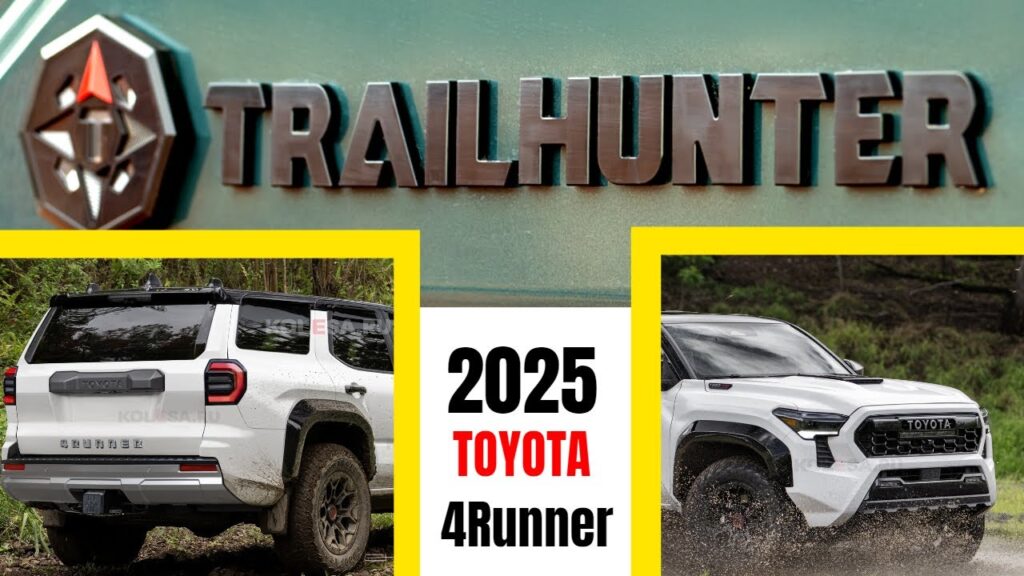
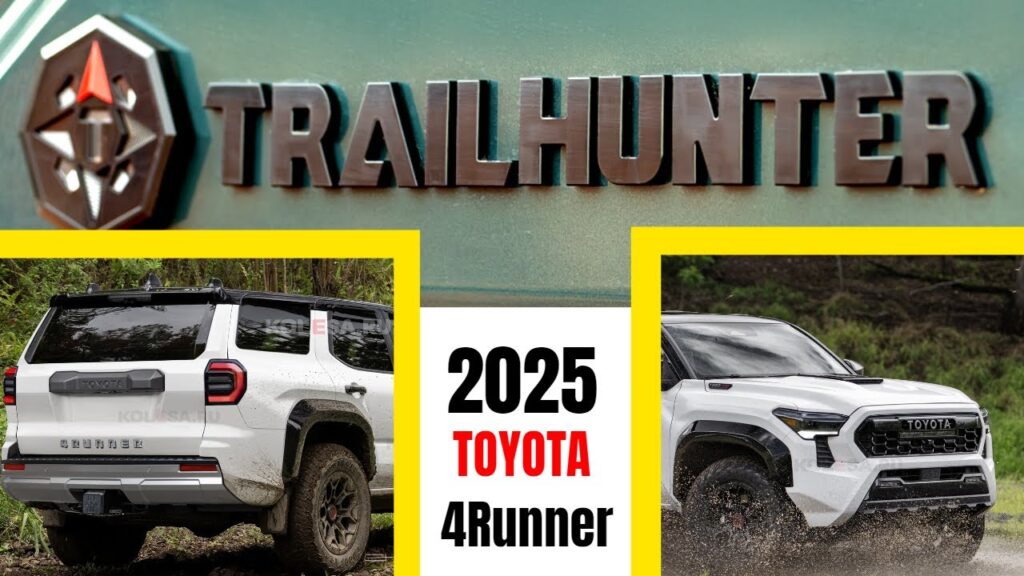
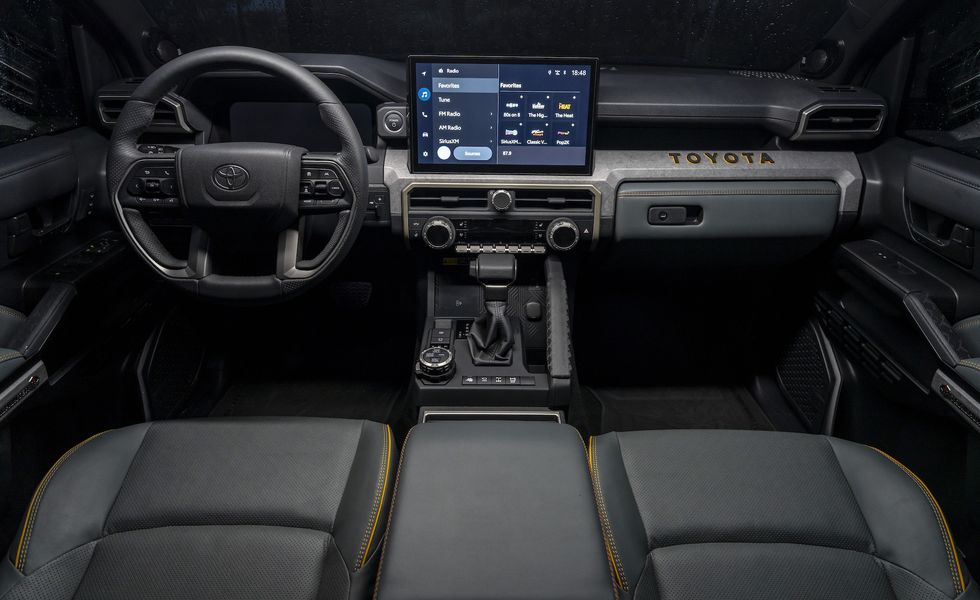
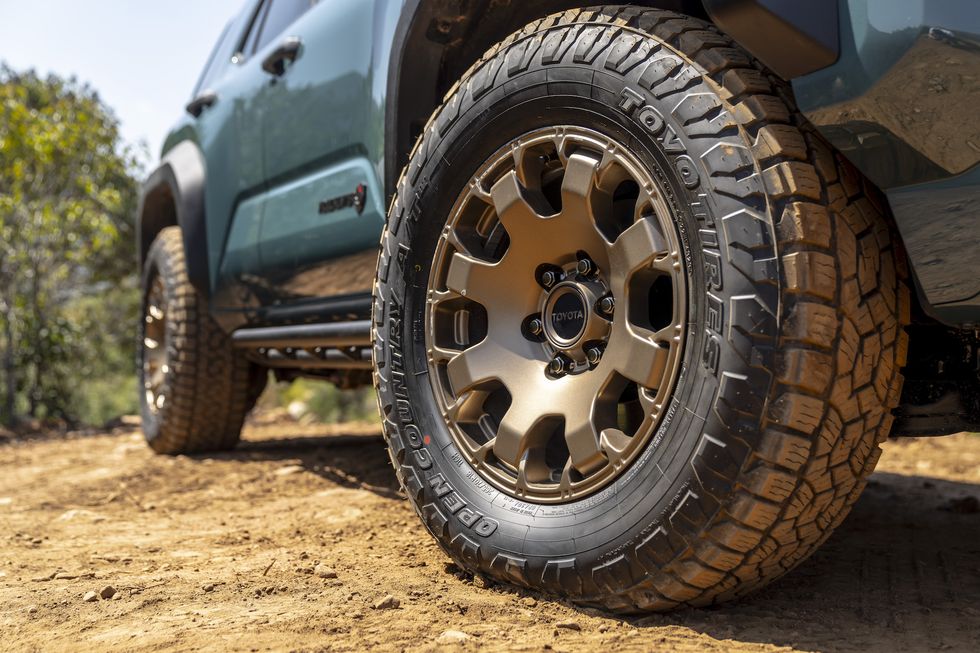












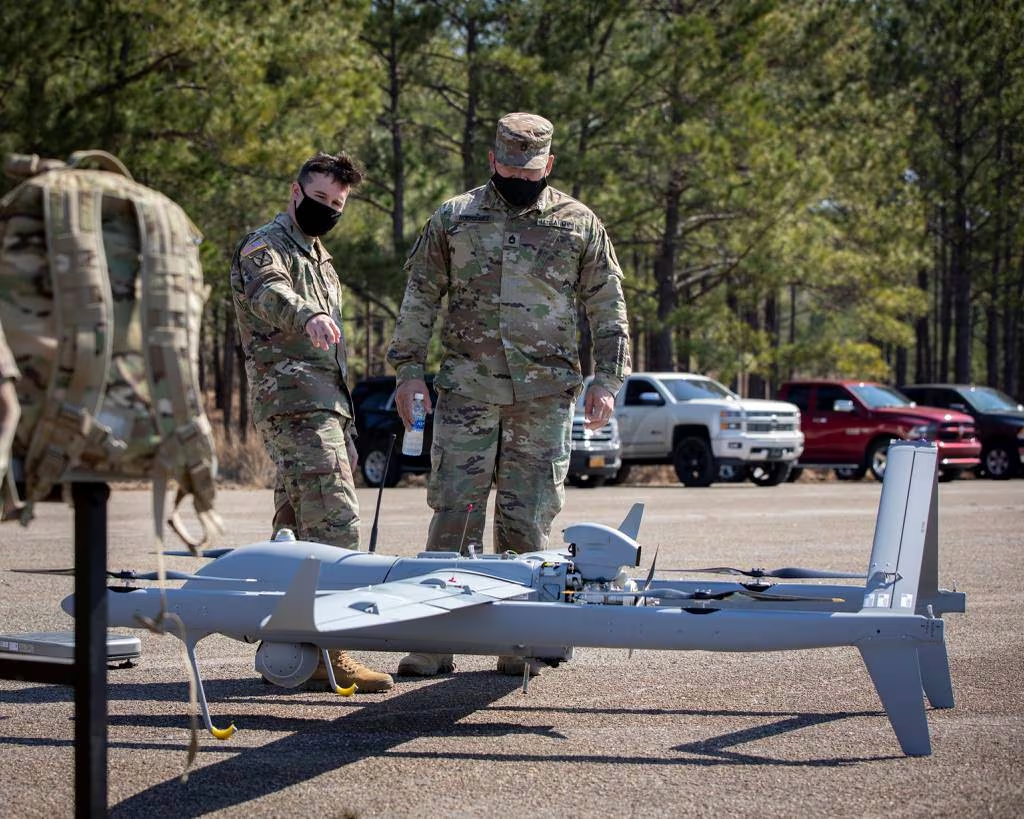
Reader Interactions